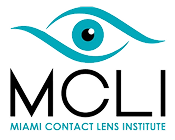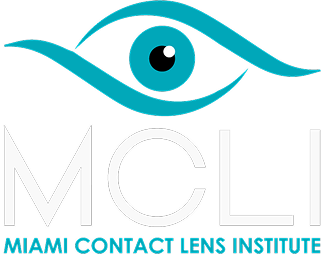Myopia, also known as nearsightedness, is a common condition that is becoming increasingly prevalent worldwide. Because myopia affects so many children, parents need to understand the long-term side effects of unmanaged myopia. Myopia, also known as nearsightedness or shortsightedness, may seem like a minor inconvenience that can be easily corrected with glasses. Yet, it can develop complications. To help safeguard your child’s vision, we have compiled a parents’ guide to myopia to help you protect your child’s eye health.
What Is Myopia?
Myopia is an eye condition that develops when the eyeball grows longer than usual from front to back, causing light to focus in front of the retina instead of directly on it. This elongation prevents clear vision of distant objects, making them appear blurry, while near objects remain in focus.
Although the exact cause of myopia is not fully understood, we know that genetic and environmental factors both play a role. Increased screen time, reduced time outdoors, and long periods of near work have contributed to the rising global rate of childhood myopia. Children with myopia typically experience worsening eyesight as their eyes grow.
Myopia usually stabilizes in the late teen and early adult years. Uncontrolled adolescent growth of the eyes can lead to complications in later life. Myopia management is fundamental for maintaining long-term quality of life and preventing vision-threatening ocular diseases. Fortunately, there are several ways to manage childhood myopia to slow progression and reduce the risk of complications.
How Does Myopia Impact Long-Term Eye Health?
When myopia is unmanaged, the elongation of the eye happens quickly. The stretching and thinning of ocular tissue can predispose individuals to retinal detachment, a condition in which the retina separates from the back of the eye. Left unmanaged, myopia significantly increases the risk of developing glaucoma, a group of eye diseases that can result in irreversible blindness through progressive optic nerve damage.
High myopia can also lead to myopic macular degeneration (MMD), a sight-threatening condition caused by the progressive stretching and thinning of the retina and underlying structures at the back of the eye. This degeneration can result in permanent central vision loss, similar to that seen in age-related macular degeneration, but it often occurs much earlier in life. Once macular damage develops, vision cannot be restored, making early myopia management essential for prevention.
Another long-term risk of untreated myopia is early cataract development. Cataracts are not unusual among adults over 60. However, untreated childhood myopia significantly increases the likelihood of developing cataracts at a young age. Myopia complications can impact quality of life and visual acuity. Early intervention is key in preventing these complications.
Can Early Myopia Detection and Management Protect Eye Health?
Since unmanaged childhood myopia can raise the risk of eye diseases in the future, slowing the eye’s growth is essential. Routine eye exams help your optometrist track how your child’s eyes are developing and start treatment early to help protect their long-term vision.
While glasses and traditional contact lenses can correct blurry vision, they don’t prevent myopia progression. More advanced management methods, such as Orthokeratology, multifocal soft contact lenses and low-dose atropine eye drops, have been proven to slow myopic progression by reducing the stimuli that cause the elongation of the eyes.
How Do Lifestyle Habits Affect Myopia Progression?
In addition to myopia management treatments, parents should encourage lifestyle habits that support healthy eye development. Spending time outdoors exposes children to natural sunlight, which may increase ocular dopamine levels and slow the progression of myopia.
Reducing screen time has also shown significant benefits for ocular development and minimizing the risk of long-term myopia side effects. Hours of exposure to digital devices have been linked to myopia development in children, so it’s important to carefully monitor screen time. Parents should limit screen time for children under two and restrict it to one hour per day for children between two and four years old.
Children who attend school, typically between the ages of 5 and 17, are often required to use digital devices for learning-related activities. Parents should aim to limit their children’s screen time, ideally to no more than two hours per day. However, this can be challenging to enforce consistently. It is necessary to educate children about the impact of screen use on their eyes and to encourage them to take regular breaks. For example, every 20 minutes, remind children to look at something at least 20 feet away for 20 seconds to reduce eye strain.
This is aligned with guidelines recommending balanced screen use and frequent breaks to support eye health.
The Critical Role of Myopia Management for Children
Unmanaged myopia has risks. Myopia progression can lead to serious eye diseases in later life. With the advances in myopia management interventions, eyecare practitioners can work with parents to slow the progression of myopia and reduce the risk of complications.
If you suspect that your child may have myopia, schedule a consultation at Miami Contact Lens Institute. Our expert eye care practitioners will help you understand the available management methods, so you can choose the solution that best suits your lifestyle. You play a vital role in your child’s long-term eye health, so don’t wait for their myopia to get worse before seeking professional support and management interventions.

.jpg)
